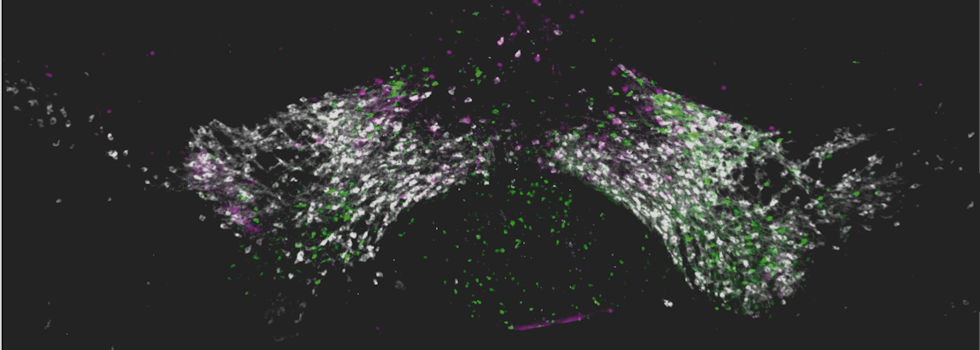Our Research Focus
Our research focuses on afflictions of the nervous system in which reward seeking plays a key role, such as disorders of binge eating (ravenous intake of a lot of food in a short period of time) and drug addiction. These are prevalent problems that unfortunately can have very negative outcomes for those affected, as treatment options are often inadequate.
A particularly problematic feature of these conditions is their ‘relapsing’ nature. Patients can temporarily suppress undesirable behavior (e.g. the binge-eating), but unfortunately tend to remain vulnerable to triggers in the environment that rekindle it. Stressful events in particular can be potent triggers in this regard (i.e. causing stress eating of 'comfort foods').
One of the main goals of the lab is to understand how stressful events manage to have such a strong influence on reward systems of the brain to promote the intake of (food) rewards. To this end we perform research in rodents, who share with humans the evolutionarily conserved neural systems responsible for integrating information about stress and rewards. We strive to use the insights we obtain to devise intervention strategies to counteract dysfunctional brain circuit plasticity and excessive reward seeking.
Guiding principles
Guiding our research is the following trio of principles:
-
Stress causes changes at specific synapses (contact points between nerve cells) within neural circuits (combinations of specifically wired neurons across brain regions).
-
The importance of these synaptic changes within specific circuits can be gauged, using strategies to mimic or reverse/prevent them, evaluating the resultant impact this has on circuit function and (reward seeking) behaviors.
-
This overall approach can, in the long run, provide a basis for therapeutic strategies for eating disorders and drug addiction.
Approach
In order to determine the function of mapped neural circuits, we primarily make use of electrophysiological approaches, complemented with optogenetics, chemogenetics and neural tracing tools. We also measure calcium signals from neuronal populations, using approaches like fiber photometry. Finally, with the aid of behavioral tests, we utilize the aforementioned technical toolkit to assess the importance of specific forms of circuit plasticity for reward seeking.



